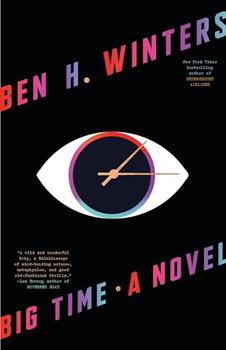Summary | Excerpt | Reviews | Beyond the Book | Readalikes | Genres & Themes | Author Bio

Critics' Opinion:
Readers' Opinion:
First Published:
Apr 2013, 336 pages
Paperback:
Apr 2014, 352 pages
 Book Reviewed by:
Book Reviewed by:
Elizabeth Whitmore Funk
Buy This Book
My introduction to human anatomy was missing a good deal of its own. It took the form of a headless, limbless molded-plastic torso in Mrs. Claflin's science classroom. The chest and rib cage were sheared away, as if by some unspeakable industrial accident, leaving a set of removable organs in full and lurid view. The torso stood on a table in the back of the room, enduring daily evisceration and reassembly at the hands of fifth graders. The idea was to introduce young minds to the geography of their own interior, and at this it failed terribly. The organs fit together like puzzle pieces, tidy as wares in a butcher's glass case. The digestive tract came out in parts, esophagus separate from stomach, stomach from intestines. A better teaching tool would have been the knitted digestive tract that made the rounds of the Internet a few years ago: a single tube from mouth to rectum.
Tube isn't quite the right metaphor, as it implies a sameness throughout. The tract is more of a railroad flat: a long structure, one room opening onto the next, though each with a distinctive look and purpose. Just as you would never mistake kitchen for bedroom, you would not, from the perspective of a tiny alimentary traveler, mistake mouth for stomach for colon.
I have toured the tube from that tiny traveler's perspective, by way of a pill cam: an undersized digital camera shaped like an oversized multivitamin. A pill cam documents its travels like a teenager with a smartphone, grabbing snapshots second by second as it moves along. Inside the stomach, the images are murky green with bits of drifting sediment. It's like footage from a Titanic documentary. In a matter of hours, acids, enzymes, and the stomach's muscular churning reduce all but the most resilient bits of food (and pill cams) to a gruel called chyme.
Eventually even a pill cam is sent on down the line. As it breaches the pylorus—the portal from the stomach to the small intestine—the décor changes abruptly. The walls of the small intestine are baloney pink and lush with millimeter-long projections called villi. Villi increase the surface area available for absorbing nutrients. They are the tiny loops on the terry cloth. The inside surface of the colon, by contrast, is shiny-smooth as Cling Wrap. It would not make a good bath towel. The colon and rectum—the farthest reaches of the digestive tract—are primarily a waste-management facility: they store it, dry it out.
Function was not hinted at in Mrs. Claflin's educational torso man. Interior surfaces were hidden. The small intestine and colon were presented as a single fused ravelment, like a brain that had been thrown against the wall. Yet I owe the guy a debt of thanks. To venture beyond the abdominal wall, even a plastic one, was to pull back the curtain on life itself. I found it both appalling and compelling, all the more so because I knew a parallel world existed within my own pinkish hull. I mark that fifth-grade classroom as the point at which curiosity began to push aside disgust or fear or whatever it is that so reliably deflects mind from body.
The early anatomists had that curiosity in spades. They entered the human form like an unexplored continent. Parts were named like elements of geography: the isthmus of the thyroid, the isles of the pancreas, the straits and inlets of the pelvis. The digestive tract was for centuries known as the alimentary canal. How lovely to picture one's dinner making its way down a tranquil, winding waterway, digestion and excretion no more upsetting or off-putting than a cruise along the Rhine. It's this mood, these sentiments—the excitement of exploration and the surprises and delights of travel to foreign locales—that I hope to inspire with this book.
It may take some doing. The prevailing attitude is one of disgust. There are people, anorexics, so repulsed by the thought of their food inside them that they cannot bring themselves to eat. In Brahmin Hindu tradition, saliva is so potent a ritual pollutant that a drop of one's own spittle on the lips is a kind of defilement. I remember, for my last book, talking to the public-affairs staff who choose what to stream on NASA TV. The cameras are often parked on the comings and goings of Mission Control. If someone spots a staffer eating lunch at his desk, the camera is quickly repositioned. In a restaurant setting, conviviality distracts us from the biological reality of nutrient intake and oral processing. But a man alone with a sandwich appears as what he is: an organism satisfying a need. As with other bodily imperatives, we'd rather not be watched. Feeding, and even more so its unsavory correlates, are as much taboos as mating and death.
Excerpted from Gulp: Adventures on the Alimentary Canal by Mary Roach. Copyright © 2013 by Mary Roach. With the permission of the publisher, W.W. Norton & Company, Inc.





The Funeral Cryer by Wenyan Lu
Debut novelist Wenyan Lu brings us this witty yet profound story about one woman's midlife reawakening in contemporary rural China.
Your guide toexceptional books
BookBrowse seeks out and recommends the best in contemporary fiction and nonfiction—books that not only engage and entertain but also deepen our understanding of ourselves and the world around us.